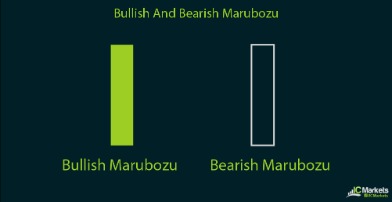What is Stop Loss in Trading & How to Use it?
Content

Take profit orders and stop loss orders are excellent tools to automate a small part of your trading. Using tools like these, traders can enter trades and move on to other tasks without having to worry about sudden changes in prices. The take-profit order will lock in profits when the price reaches the target of the trade, whereas the stop-loss order serves to take a loss and protect the trader against further downside.

We advise you to carefully consider whether trading is appropriate for you based on your personal circumstances. We recommend that you seek independent advice and ensure you fully understand the risks involved before trading. A stop-loss is a price level at which a trade is closed to minimize an investor’s loss on a position in an adverse market movement. An OCO close order, meanwhile, is a type of exit order that involves setting both a stop and a limit at the same time. In trading these SFPs, traders generally place their stops above the new swing high that is formed after the liquidity grab. These trades play out quickly and are ideally closed when the correction starts to slow down.
Trade forex with IG
It doesn’t matter whether you trade stocks, commodities or currency pairs. And now, let us imagine that we no longer try to decipher “market’s signals” about where it is going to move. I mean we now look at the chart and think, “Although I see trends/flats/patterns here, I still do not know where the price will go, and I do not care”. In fact, we can’t know this (the reasons are described in detail in my other articles, I won’t repeat myself). So, with this approach, we stop thinking that the market must behave in a particular way (“if highs are getting higher, the price MUST go up). We do not think anymore that, if the price chart draws a particular pattern, it MUST go somewhere.

The price moved down from the beginning of the trading session. Open Interest goes down in points 1, 2 and 3, which means that traders close their positions. Some of them close their positions with a profit, while the others close their positions with a loss. If the price you are trying to set on your order to open is better than the current market, you will need to place a take-profit order. This will only execute if the market price is at this limit or better.
However, remember that you will be able to get profit only by following your strategy and basing your predictions on the accurate market analysis. Stop-loss and take-profit orders are two types of stop orders, which is a general term used to describe an exchange operation with a pre-established activation point in terms of price. Stop orders help traders limit losses and lock in profits on positions without daily (or hourly) monitoring of the market. Take profits can help you to be disciplined with your trading strategy and not chase profits unnecessarily.
How to open an FBS account?
It depends on your trading goals and how much money you’re willing to lose. Most traders decide to set their take-profit levels at 20% to 25%. You might also use soft take profit levels, if you are able to watch the price make a very good, long “climax” candle.
- As you can see, we put the TP level a few pips below the resistance.
- You can specify your stop loss to move up five pips every time the price moves up five pips – ideal for when you’re not around to manage your positions.
- Placing your stop while trading the breakout can be difficult, especially if you are trading a trending asset.
- Using take-profit orders, the trading platform automatically closes the position when the price reaches the level.
- Moreover, having a stop-loss order set ensures you don’t have to monitor your holdings all the time.
We’ve already seen OCO entry orders, so let’s look at how they’re used to close trades. As with standard stop loss orders, trailing stops may not be triggered at the specified price during volatility. In today’s article, we will dive deeper into stop-loss and take-profit orders — tools that can make risk management a lot easier. The benefit of using a take-profit order is that the trader doesn’t have to worry about manually executing a trade or second-guessing themselves. On the other hand, take-profit orders are executed at the best possible price regardless of the underlying security’s behavior. The stock could start to breakout higher, but the T/P order might execute at the very beginning of the breakout, resulting in high opportunity costs.
Stop Limit Orders
In most cases, the trailing stop will get updated as your position in a particular market evolves. Something to think about is where to place your stop losses once you’ve entered into a trade. It’s generally recommended that you place your stop loss in an area where you’re only risking between 1-5% of your total capital.
No matter your experience level, download our free trading guides and develop your skills. This article explains how to add stop loss and take profit orders in Desktop JForex3. A take profit, first of all, indicates the FACT that the expected scenario has worked out.
How to Use Stop Loss and Take Profit in Trading
These levels serve as technical motivations for them to exit a trade, be it to abandon a losing position or realize potential profits. Note that these levels are unique to each trader and do not guarantee successful performance. https://g-markets.net/helpful-articles/how-to-become-a-successful-forex-trader-in-5-steps/ Instead, they guide decision-making, making it more systematic and robust. Thus, evaluating risk by identifying stop-loss and take-profit levels or using other risk management strategies is a good trading habit.
- Of course, it is also possible that the price never reaches your specified price, and the order remains untriggered.
- One way to use parabolic SAR to set take-profit levels is to close your position when the dots switch sides, indicating a trend reversal.
- Open Interest by itself doesn’t show what orders came into action in the market.
- Risk-to-reward is the measure of risk taken in exchange for potential rewards.
- A stop-loss is designed to let your broker know how much you are willing to risk with your trade.
Stop-loss and take-profit levels are price targets that traders set for themselves in advance. Often used as part of a disciplined trader’s exit strategy, these predetermined levels are designed to keep emotional trading to a minimum and are essential to risk management. Timing the market is a strategy where investors and traders try to predict future market prices and find an optimal price level to buy or sell assets. Under this approach, figuring out when to exit the market is vital. Stop-loss and take-profit levels are two fundamental concepts that many traders rely on to determine their trade exit strategies depending on how much risk they are willing to take. These thresholds are used in both traditional and crypto markets, and are especially popular among traders whose preferred approach is technical analysis.
Usually, the price bounces from support levels and traders look to long that bounce. A stop limit order is very similar to a stop market order, with the only difference being the execution. Rather than the asset being sold at market price, a limit-sell order is placed. It means that an order will only be filled if the pre-determined price is reached.

Every trader’s main goal should be to trade the right way, and money will follow. Instead of staying and monitoring the market to know the right time to close a trade at a loss or profit, these tools have become useful for these purposes. In addition, you don’t have to monitor the charts all day after trade execution, as you can always predetermine your SL and TP levels and continue with other activities. Having specific stop-loss and take-profit prices will reduce the tendency to make emotional decisions when trying to exit trades. It is normal to have situations where trades are on the losing side for a long time and later close in profit. Relying on emotional triggers would often make beginner traders close such trades too early.
A stop-loss order is placed with a broker to sell securities when they reach a specific price. These orders help minimize the loss an investor may incur in a security position. So if you set the stop-loss order at 10% below the price at which you purchased the security, your loss will be limited to 10%. Traders who use this method typically set their take-profit level just above the support level and stop-loss level right below the resistance level they have identified. These tools will help you focus on your trade exit and risk management strategies. They are also more effective when combined with other risk management practices.
It is important for a trader to have a correct attitude to stop orders and be able to use them. Activated stops do not make a trader a loser and his strategy a mistake. That is why ATAS offers a trader three variants of protective strategies.

Commenti recenti